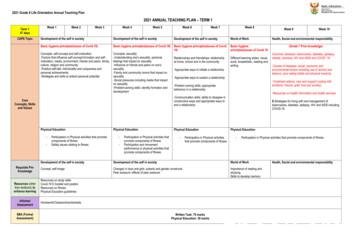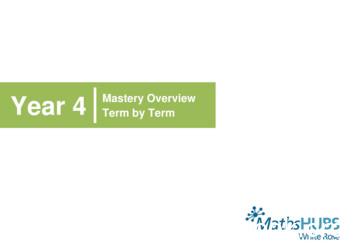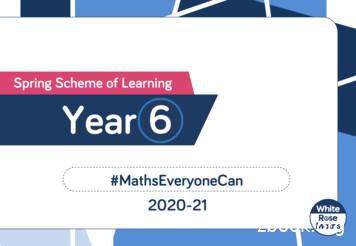Online Archaeology Week 2021
DISCGYLOACCRHAAEOREVOTIVIT Y B O O KTELONLINE ARCHAEOLOGY WEEK 2021
How to use this BookletIn order to view and complete all the activities here, you’ll need to open this document using AdobeAcrobat. It will not work properly in a web browser. You can download Adobe Acrobat Reader forfree if you do not already have it on your computer. Some activities can be done digitally, butothers you may need to print.If you complete any of the activities in this booklet, you can send it to the Society for AmericanArchaeology for a small prize, an embroidered patch, pictured below. You can either email thedocument to public edu@saa.org or physically mail it to:Society for American ArchaeologyEducation and Outreach1990 K St. NW #401Washington, DC 20006Your activity, patch, and more information about archaeology will be mailed back to you at theaddress you provide here:Name:Address:Online Archaeology Week 2021This booklet was created by Emily Long, Bernard Means, and Beth Pruitt for the Society forAmerican Archaeology's online celebration of archaeology April 5-9, 2021. View other digitalresources at www.saa.org/publicweek. For any questions, please contact public edu@saa.org.To give us feedback, please go to the Online Archaeology Week Feedback Wall.
Discover ArchaeologyArchaeologists study the whole human past through the things people left behind all over theworld. You might think of archaeologists as just searching for gold, digging up tombs, andexamining mummies. It’s part of the job of archaeologists to help explain what we really do.Do you think these popular ideas about archaeology are true? Check either true or false, and turnthe page to find out the answers!Archaeologists study and dig up dinosaursTrueFalseTrueFalseTrueFalseThere is NO archaeological evidence thataliens built the pyramids in EgyptArchaeologists get to keep or sell anythingthey find Created by E. Long 2021
Discover Archaeology: AnswersArchaeologists study and dig up dinosaursArchaeologists study the human pastby what people leave behind, likestone tools, baskets, and buildings.They don’t study dinosaurs! Scientistswho study ancient animals, likedinosaurs, are called paleontologists.FalseThere is NO archaeological evidence thataliens built the pyramids in EgyptThe ancient Egyptians built thepyramids, not aliens! People arecapable of making amazing things.Archaeologists study how peoplemade the pyramids through thetools the ancient Egyptians leftbehind around 4,500 years ago.TrueArchaeologists get to keep or sell anythingthey findFalseArchaeologists can’t personally keepwhatever they find while surveyingor excavating. There are lawspreventing the sale of theseartifacts, too. Archaeologists wantto use what they find to understandthe past and share it with futuregenerations.What’s one thing you’ve learned about archaeology so far?Created by E. Long 2021
Discover ArtifactsArtifacts are everyday things made or used by humans and are found where people used to liveand work. There are many kinds of artifacts, such as tools, containers, toys, decorations, oranything else a person might use. Archaeologists study artifacts to learn more about the peoplewho made these objects and what happened in the past.Studying pieces of pottery, known as sherds, can tell archaeologists about what people ate andhow they cooked or stored food. They can also examine flakes, the bits of rock that are createdwhen making stone tools, to figure out how people made tools like arrowheads and spearheads.Studying different kinds of containers like baskets, pottery, bottles, and tin cans can tellarchaeologists about when people moved to that area and the kinds of activities they were doing,such as ranching or farming. Find artifacts in the word search AKERDTWhat are some objects that archaeologists might find?1. Tin Can2. Pottery3. Sherd4. Beads5. Basket6. Glass7. Bottle8. Arrowhead9. Artifact10. FlakeCreated by E. Long 2021
Discover Your HomeIf an archaeologist studied your home in 100 years, what would they find? Check any of the objectsthat an archaeologist might find in your home.What would archaeologists learn about you through these objects?Created by E. Long 2021
Discover Stone ToolsHumans have made many different kinds of stone tools by flint knapping. Flint knapping is theprocess of breaking down bigger rocks into stone tools, like arrowheads, spearheads, scrapers, andcutters. These tools come in many different shapes and sizes. The shape and size of stone tools cantell archaeologists about what they were used for, such as hunting or cutting, the age of the tool, andabout the people who made the tools. The type of rock used can also tell archaeologists about tradefor materials, like obsidian or flint.Connect the dots to make your own stone tools:Did you know?People flint knapped more than just tools. TheOfficial California State Prehistoric Artifact is astone artifact interpreted to look like a bear. It wasmade by prehistoric Californian Native Americansaround 7,000 to 8,000 years ago! Learn more atCA.gov.Created by E. Long 2021
Discover Classification: Measurements1.If you have not already, you will need to download the free Adobe Acrobat Reader tomake this activity work. You will need to choose the option to “Trust This Document.”2.On the next page, click on a box with an image of a stone point, and you can use yourmouse to rotate it. You can observe the shape of the point.3.Click on the point itself. A tool bar will appear, and you can select the triangle next tothe sphere with the arrows.4.Click on the 3D Measurement Tool. Now you can digitallymeasure the length and width of your 3D point model!5.Now you can record the shape and measurements of each ofthe stone points. Note that model units are millimeters.If you do not want to do this activity using the digital models,you can also print out the page and take measurements byhand XLSYKL XLI WM I SJ XLI TVMRXIH TEKI QE] RSX FI EGGYVEXI Classify the shape and record the measurements of the three artifacts on the next page. 8LI QSHIPW QE] XEOI E QSQIRX XS PSEH Created by B.K. Means 2021
Stone Point 1Shape:Length:mmWidth:mmStone Point 2Shape:Length:mmWidth:mmStone Point 3Shape:Length:mmWidth:mm
Discover Your Own Artifact ModelThe groundstone axe below was found on Assateague Island National Seashore in Maryland. The lastten pages of this booklet can be cut out as plans to trace onto cardboard, which you can cut out andglue together to make a cardboard model of the axe. Make sure children get the help of an adult whencutting out the plans or cutting the cardboard. View the axe as a digital 3D model on Sketchfab.Watch a quick animation showing the process of gluing the cardboard model together.Why do you think archaeologists might use models while studying an artifact?Created by B.K. Means 2021
Online Archaeology Week 2021 This booklet was created by Emily Long, Bernard Means, and Beth Pruitt for the Society for American Archaeology's online celebration of archaeology April 5-9, 2021.
(prorated 13/week) week 1 & 2 156 week 3 130 week 4 117 week 5 104 week 6 91 week 7 78 week 8 65 week 9 52 week 10 39 week 11 26 week 12 13 17-WEEK SERIES* JOIN IN MEMBER PAYS (prorated 10.94/week) week 1 & 2 186.00 week 3 164.10 week 4 153.16 week 5 142.22 week 6 131.28 week 7 120.34
Week 3: Spotlight 21 Week 4 : Worksheet 22 Week 4: Spotlight 23 Week 5 : Worksheet 24 Week 5: Spotlight 25 Week 6 : Worksheet 26 Week 6: Spotlight 27 Week 7 : Worksheet 28 Week 7: Spotlight 29 Week 8 : Worksheet 30 Week 8: Spotlight 31 Week 9 : Worksheet 32 Week 9: Spotlight 33 Week 10 : Worksheet 34 Week 10: Spotlight 35 Week 11 : Worksheet 36 .
Archaeology goes to high school 69 a) it is possible to teach ethics and values, such as tolerance and empathy, through archaeology; b) archaeology helps to develop various skills, such as abstract and critical thinking and interpretation; c) archaeology is a cross-curricula subject (see fig. 2) and thus links together different disciplines .
28 Solving and Graphing Inequalities 29 Function and Arrow Notation 8th Week 9th Week DECEMBER REVIEW TEST WEEK 7,8 and 9 10th Week OCTOBER 2nd Week 3rd Week REVIEW TEST WEEK 1,2 and 3 4th Week 5th Week NOVEMBER 6th Week REVIEW TEST WEEK 4,5 and 6 7th Week IMP 10TH GRADE MATH SCOPE AND SEQUENCE 1st Week
2021 Grade 8 Life Orientation Annual Teaching Plan Term 3 52 days Week 1 Week 2 Week 3 Week 4 Week 5 Week 6 Week 7 Week 8 Week 9 Week 10 Week 11 Resources (other than textbook) to enhance learning Resources on World of W
Year 4 negative numbers. digit numbers by one digit, integer Year Group Y4 Term Autumn Week 1 Week 2 Week 3 Week 4 Week 5 Week 6 Week 7 Week 8 Week 9 Week 10 Week 11 Week 12 Number – place value Count in multiples of 6, 7, 9. 25 and 1000. digits using the formal writt
WRM –Year 6 –Scheme of Learning 2.0s Week 1 Week 2 Week 3 Week 4 Week 5 Week 6 Week 7 Week 8 Week 9 Week 10 Week 11 Week 12 tumn Number: Place Value N
Drivers of health care expenditure: Final report i Abstract Since the NHS was established in 1948, growth in health care expenditure (HCE) has outpaced the rise in both GDP and in total public expenditure. Known drivers of HCE growth include demographic factors, income and wealth effects, technology and cost pressures. To identify the challenges and opportunities for developing a model of .























